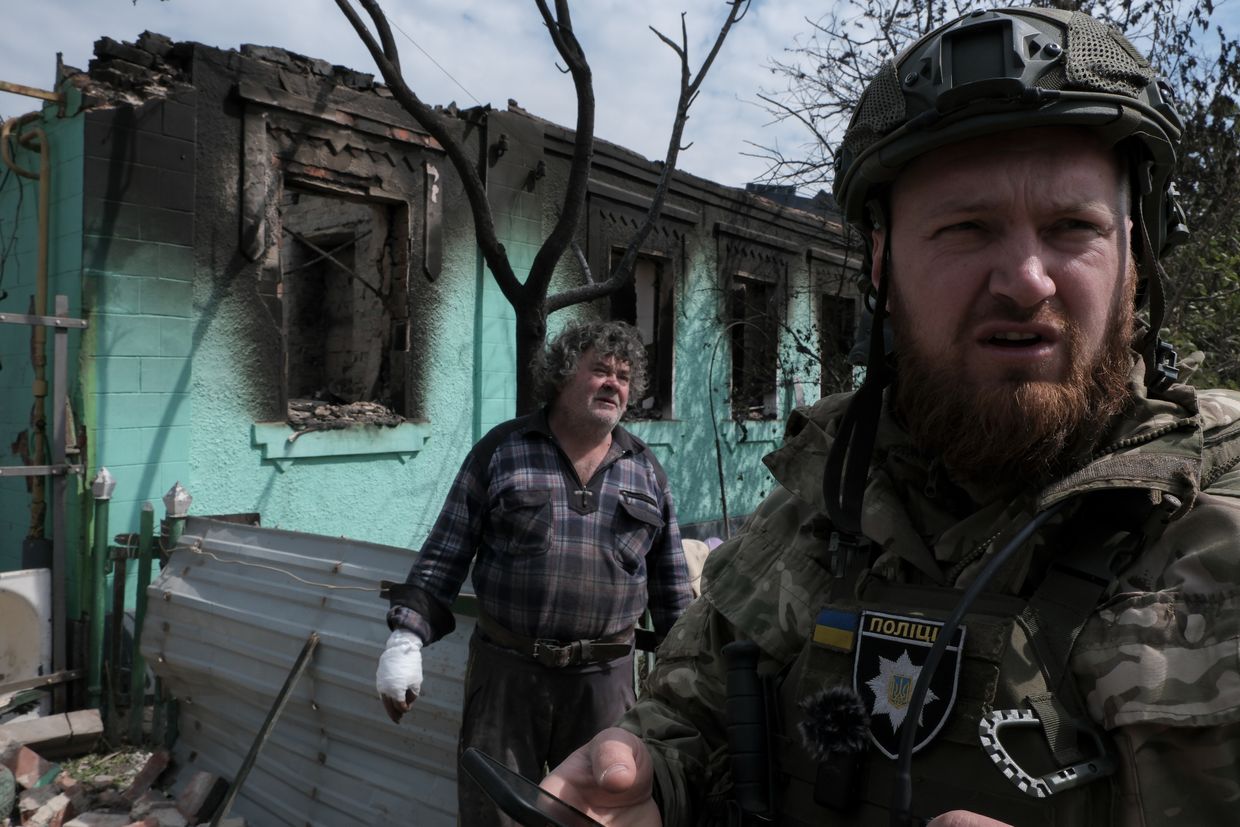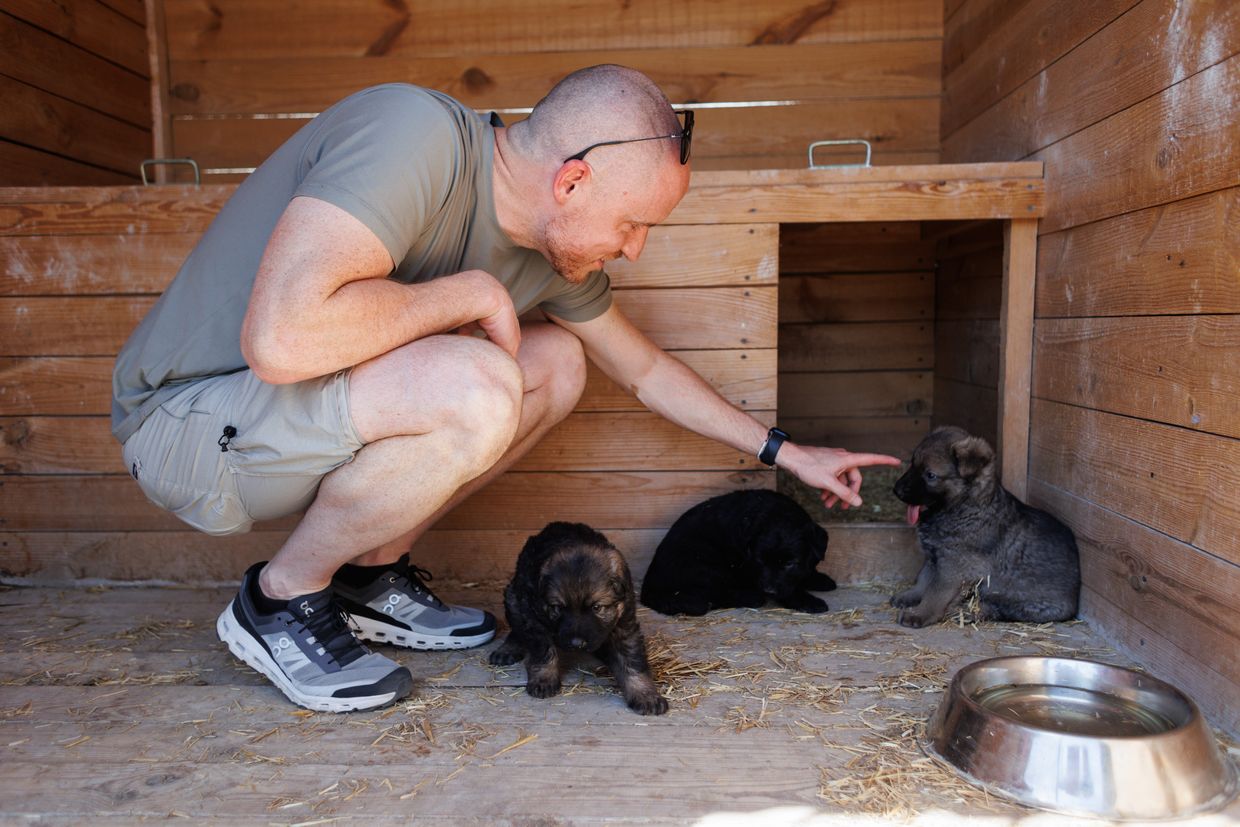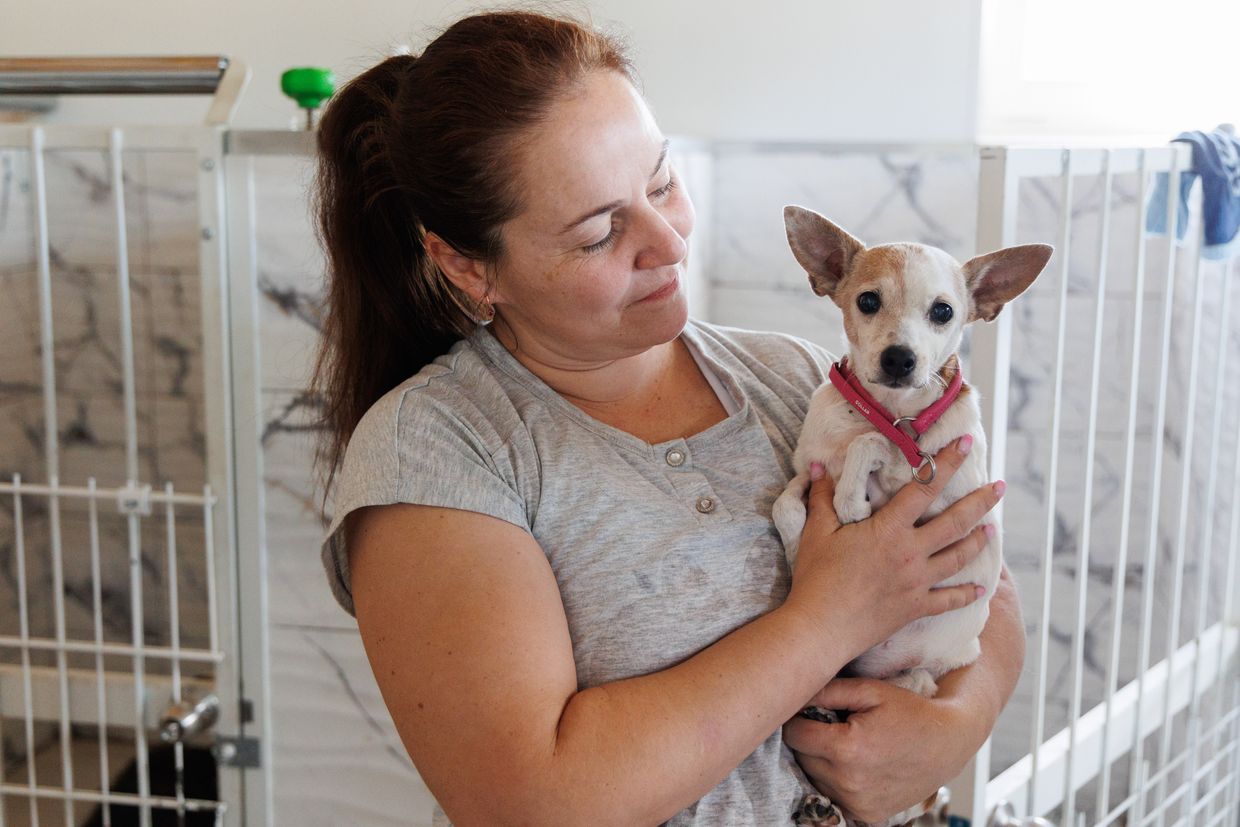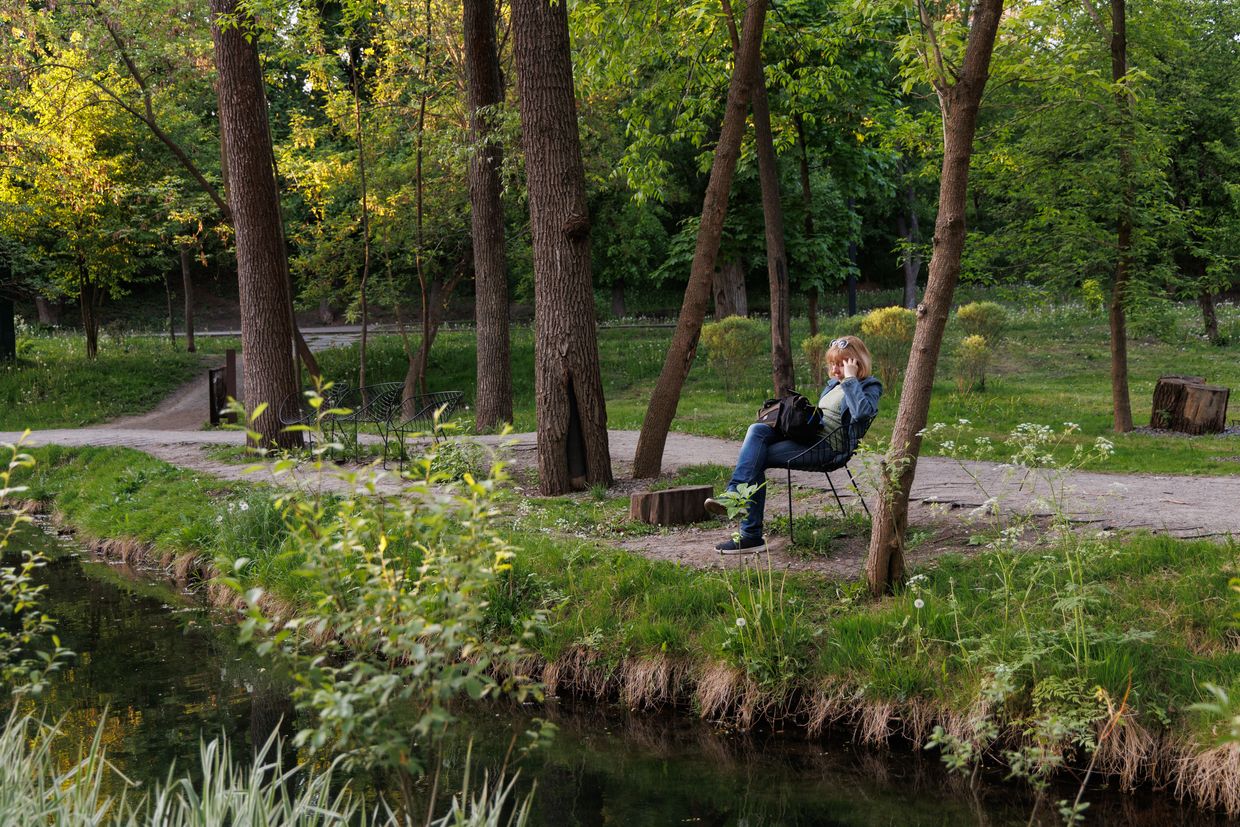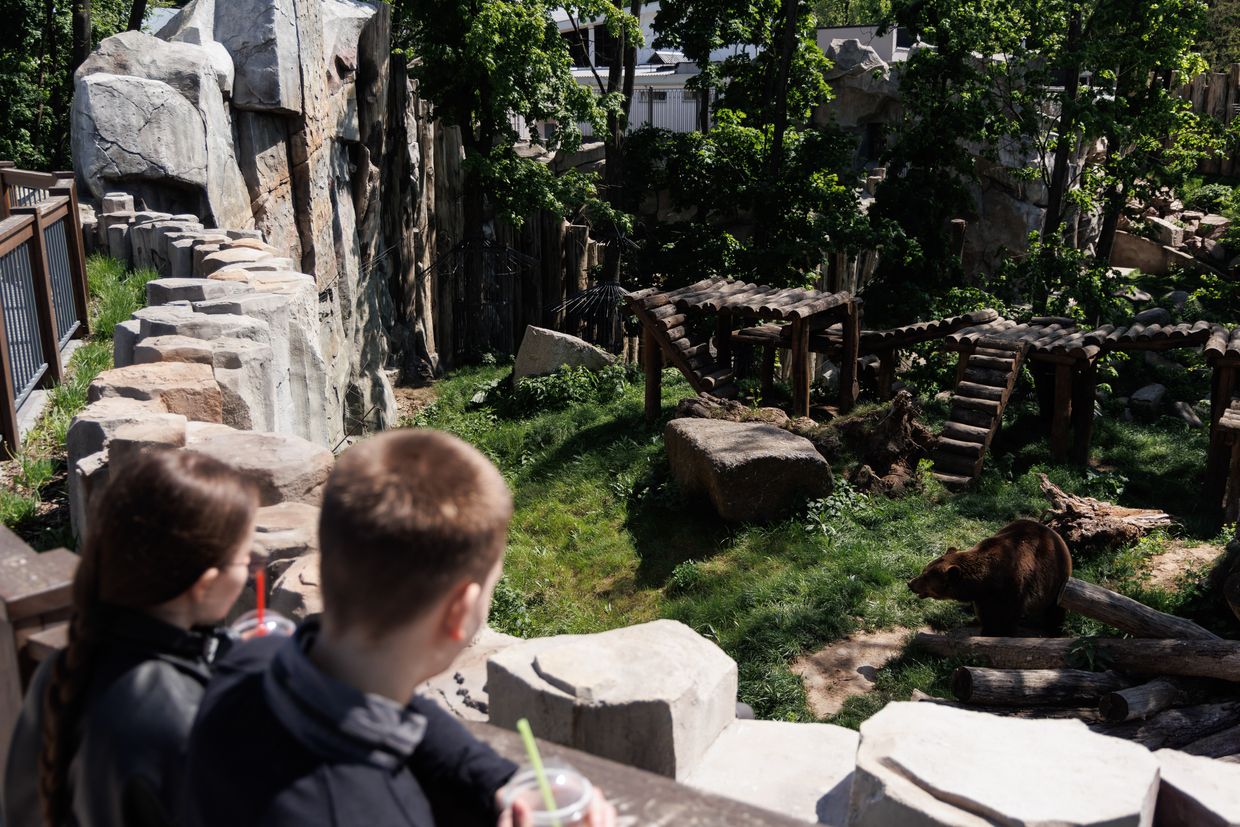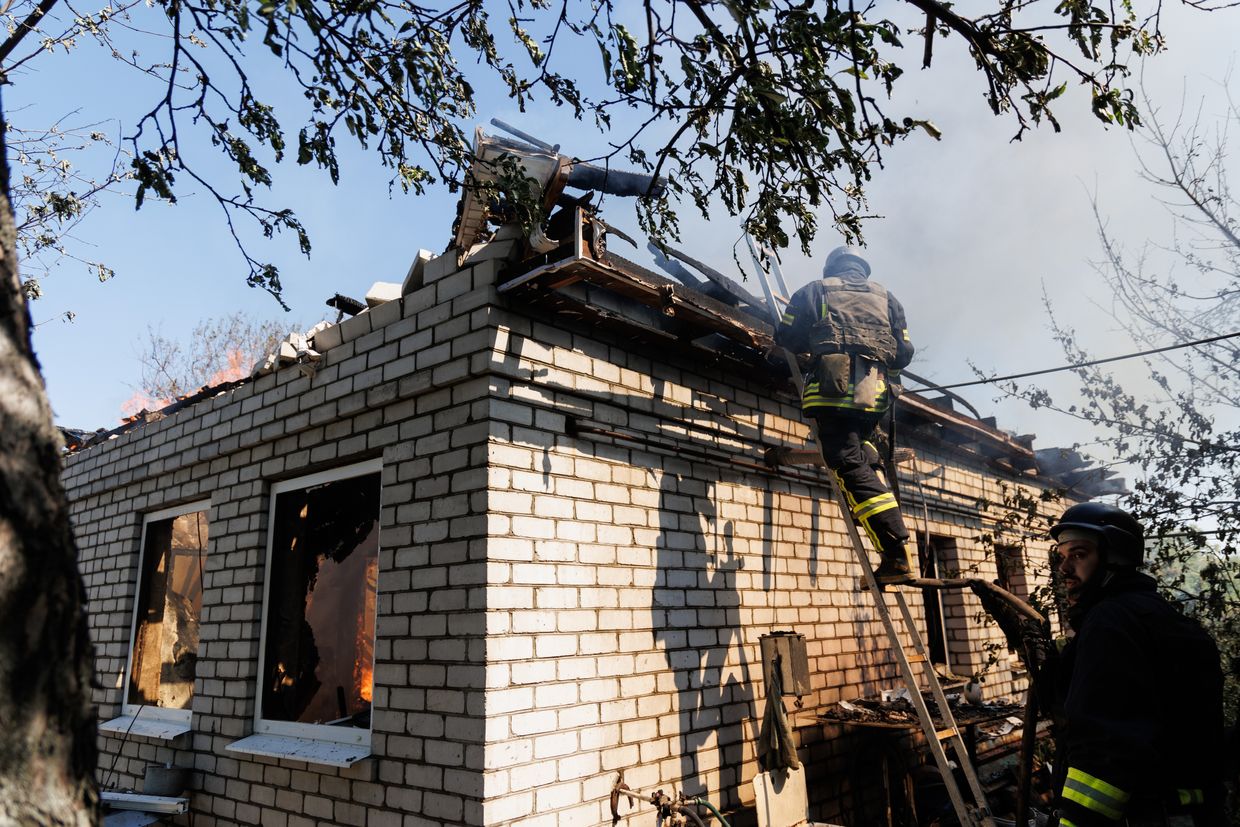KHARKIV – The first signs that something ominous is happening in Kharkiv come as soon as the train from Kyiv reaches the suburbs of the city – as two pillars of smoke appear in the distance, every single phone in the carriage erupts with a piercing electronic squawking.
"I guess we've arrived," says one man to no one in particular as he silences the critical push alert warning of an air raid.
Kharkiv is Ukraine's second-largest city after Kyiv, currently home to around 1.3 million people. Heavily damaged but never captured during the first days of Moscow's full-scale invasion, the city and surrounding oblast are now once again the focus of Russian attacks.
According to Ukraine's National Security and Defense Council Secretary, Oleksandr Lytvynenko, around 30,000 Russian troops are involved in the new ground offensive launched on May 10, mainly focusing on border settlements in Kharkiv Oblast.
This has been preceded by months of increasingly frequent aerial attacks on Kharkiv and reports that a Russian assault on the oblast could threaten the city itself.
Earlier this month, the Kyiv Independent spent 48 hours in the city to see how its people manage to work, relax, and survive in Ukraine's most-bombed major city.
Located about 30 kilometers from the Russian border, a few-hour drive from front-line towns and villages, Kharkiv is a staging point for volunteer groups helping Ukrainian civilians – and their pets – in surrounding areas.
One such organization is NOR DOG, a group of volunteers rescuing dogs from near the front lines from their base in the south of the city which they currently share with around 50 animals waiting to be adopted.
"When the war started there was no other option but volunteering. Everybody needed a place to get dog food for their dogs," Pavel Khramtsov, NorDog's director of field operations, tells the Kyiv Independent.
What initially started as a dog food distribution operation quickly expanded into a rescue service. In the chaos near the front lines, dogs are often left untended if their owners die or are forced to evacuate without them.
"We started seeing a lot of dogs left on chains in yards, unfed, exhausted. So we had an idea to build our own shelter, done the right way," Khramtsov says.
Reaching the animals that need help requires regular trips into "red zones," areas near the front lines where only the Ukrainian military or a handful of civilians remain.
"One of the reasons we go to the red zones is because nobody else goes there and the dogs there are the ones that need help the most," Khramtsov says.

The NorDog team has had some close calls, coming under mortar and artillery fire on several occasions, forcing them to carefully evaluate each trip they make.
"I look at it mathematically," Khramtsov says. "I look at the statistics and see in a village of 1,000 people, two people were killed in the last week.”
"But they live there 24 hours a day and we come there once a week for two or three hours because we try to do everything fast."
At lunchtime, air raid sirens sound in Kharkiv once again and reports on local Telegram channels warn of Russian guided bombs, also known as KABs, being launched at the city from Russia's Belgorod region.
The bombs – some as large as 1.5 tons (3,300 lbs) – are far cruder and less accurate than the cruise and ballistic missiles Russia uses to strike civilian infrastructure across Ukraine, but are causing massive damage and numerous casualties in Kharkiv, essentially as a weapon of terror.
Reports of their launches soon turn into reports of two hits just north of Kharkiv in the town of Derhachi.
Near the site of one explosion broken glass is strewn across the road and pavement from nearby buildings damaged by the shockwave.
Amongst it are what a police officer tells us are small, twisted pieces of still-smoldering metal from the bomb itself.
Speaking from inside a ground-floor apartment through the space where her window used to be, one woman tearfully explains that this will be the second time she has had to replace the glass in two years.
Nine people were injured in the attack, eight of them children.
On the outskirts of the town, the second bomb landed in the garden next door to an elderly couple. The roof of their house is destroyed. All their windows litter the floor in tiny shards. A tree in the garden is still smoking next to a crater in the earth.
"It all shattered in a second," Tetiana, 62, tells the Kyiv Independent as she sweeps up the broken glass from the floor of the kitchen.
On the table next to her, still covered by a cloth are the Easter cakes she was baking when the bomb hit.
Pointing to her dazed husband and his bloodied and bandaged head, she says: "He was hit a lot. It (debris) was all stuck in him like a hedgehog.”
"Where are those years we used to build [this house]? Now the years are gone, and we have no health to build again."
She gives up sweeping the glass and breaks down in tears.
Outside her neighbor sits, her house also damaged by the explosion.
"To our relatives – I have relatives in Russia – they are assholes and they will never be forgiven in their lives," she says.
"Never. All this completely excludes any kind of kinship."
A twenty-minute drive back into Kharkiv as day turns to evening, the Sarzhyn Yar park is a world away from destruction at the latest sites of Russian attacks.
The long strip of green is fed by natural springs, providing drinking water for some, and permanently cool bathing waters for others.
Dog owners gather and compare notes in a training area with tunnels and see-saws. Individual chairs by the water are the perfect post-work book reading spot.
"It's easy to relax here," 22-year-old Yana tells the Kyiv Independent. "Maybe that sounds strange, but when you're under the bombs every day and then you can come to this park, see this beautiful view, drink a coffee, you can really relax.”
"We can forget about the war a little bit."
A complete escape from the reality of being at war with a country 30 kilometers away is impossible and thoughts of an impending Russian assault on Kharkiv are never far away.
"I read the news every day," Yana says. "When it gets too dangerous we'll leave (Kharkiv).”
"But right now, life is going on in this moment,” she adds.
Sat nearby are two teenage boys. They rode their electric scooters to the park, their school backpacks hanging from the handlebars as they sit and chat, each laughing occasionally at something the other says.
When asked if they think they have normal lives for teenagers, one says with no hesitation: "Yes, of course."
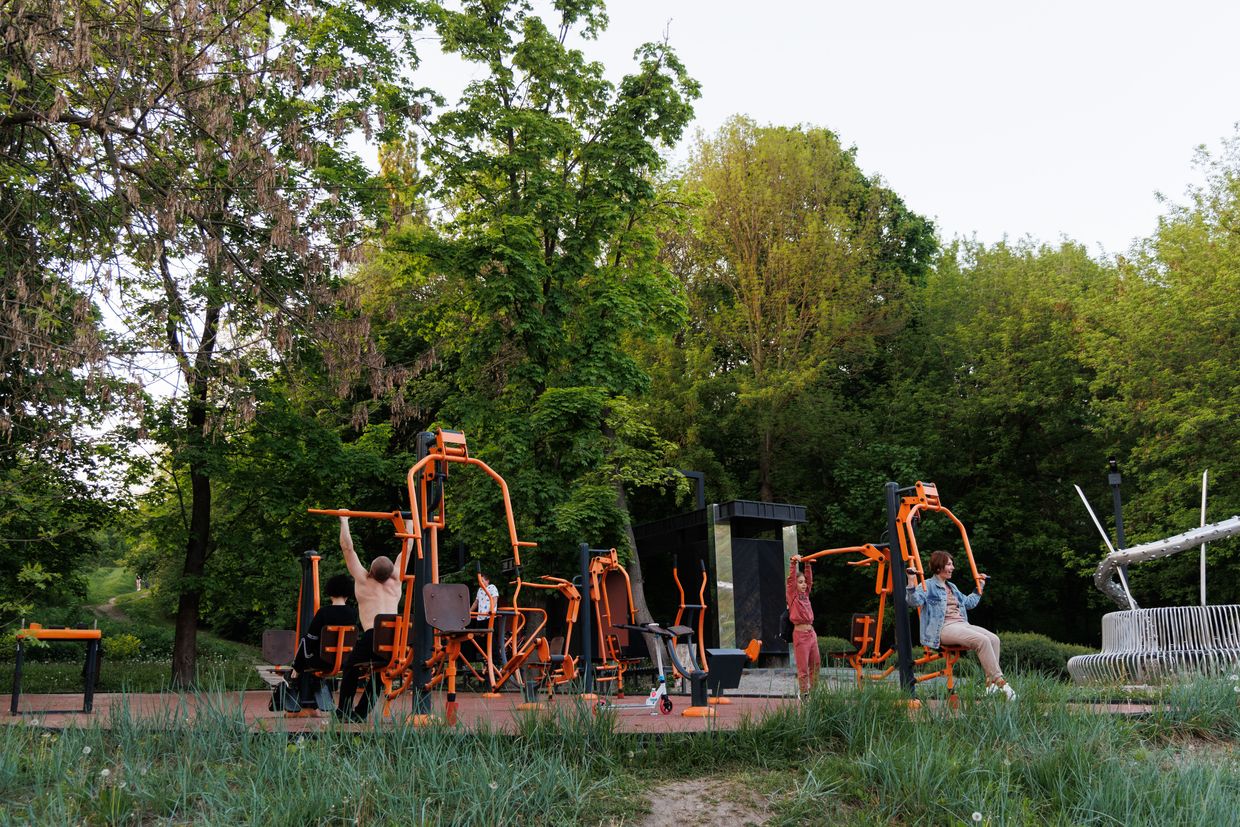
As he speaks, the air raid sirens sound once again. More guided bombs have been launched, according to Telegram channels. No one in the park reacts.
Later that night, Russia launched a wave of kamikaze Shahed drones at Kharkiv. Another air raid siren.
An hour later there is an explosion in the center of the city. A few minutes after, the characteristic buzzing sound of a Shahed can be heard overhead.
The buzzing increases in pitch and volume as it heads to the ground and explodes into a residential building a few streets away.
Twenty minutes later the all clear is given and the city goes back to sleep.
The next day begins at the offices of the International Rescue Committee (IRC), a global NGO that assists people affected by humanitarian crises, where the Kyiv Independent meets Oleksandr Volkov, a Kharkiv-based doctor who is about to head out on one of his regular trips to villages near the front lines to give medical care to the vulnerable.
Volkov says as well as the physical injuries caused by the recent uptick in Russian drone and bomb attacks, they are inevitably having an effect on the mental health of those living in Kharkiv and the surrounding region.
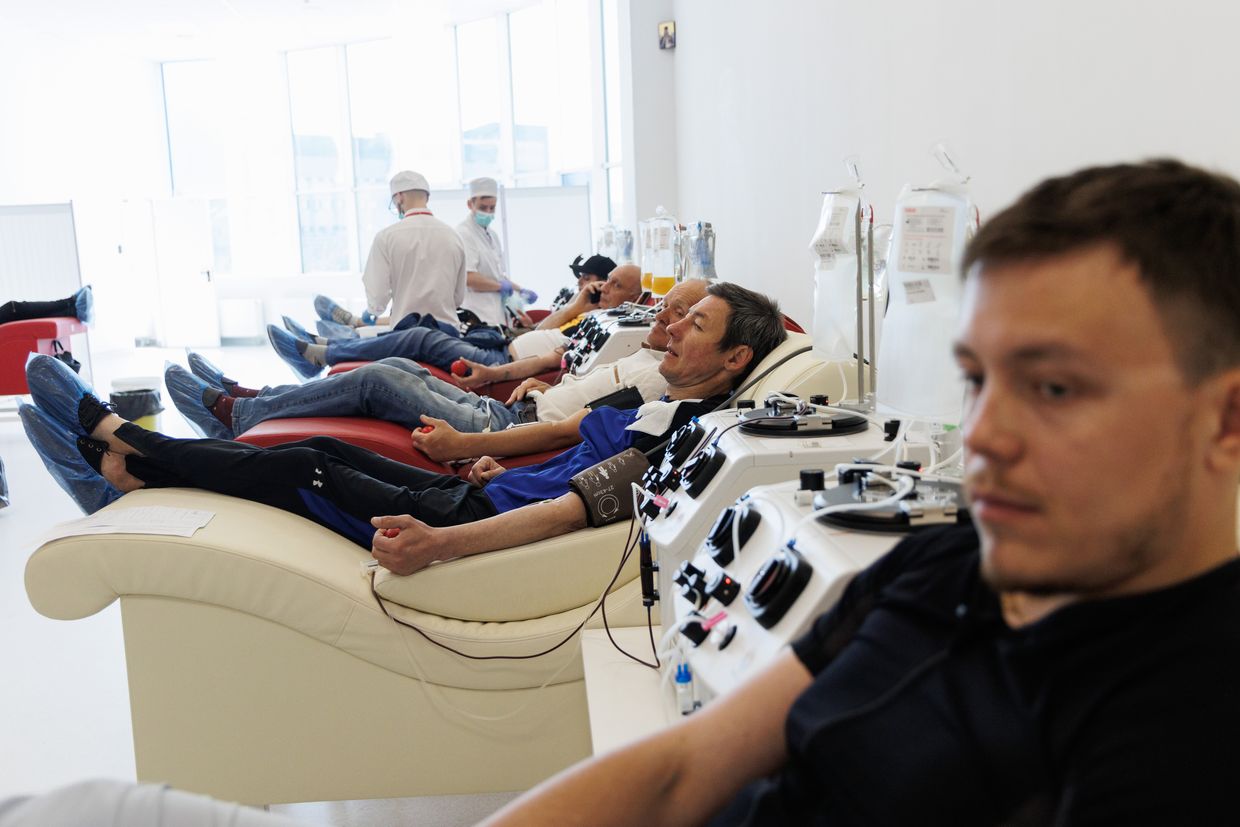
"The situation has changed a lot over the last six months," he says. "People have been living under Russian bombing for a long time and they get used to it. But people have insomnia and depression from lack of electricity, water, and a lack of safety."
According to a recent IRC survey conducted in Kharkiv Oblast, 15% of respondents reported mental health care is a pressing issue, and 10% of respondents reported feeling the impact of war-related trauma.
Outside on the streets of Kharkiv, a gloriously sunny spring day and rare respite from air raid alerts belies the mental health crisis bubbling under the surface.
Despite the ever-present threat of destruction, a small army of civic workers spends a few hours each morning beautifying the city by planting flowers, scrubbing walls, and touching up the paint on railings.
But in Rynok Heroiv Pratsi (Labor Heroes Market), a large open-air market in the north-east of the city, what is bubbling under the surface becomes more apparent.

Located in Kharkiv's Saltivskyi district, the residential distrcit was heavily damaged by missiles and artillery during Russia's failed attempt to take the city in 2022.
According to local authorities, 70% of the area's housing was damaged or destroyed. More than 600 civilians, including 26 children, were killed across the city during the Battle of Kharkiv, according to local police.
Many of the stalls remain twisted and shells burned out, though some market sellers set up their wares in them regardless, selling an array of clothes and housewares to a small number of shoppers.
But as soon as the cameras appear, the mood shifts. People don't want to be filmed, with some even expressing a fear that if their faces appear on film, they'll become a target for Russian strikes.
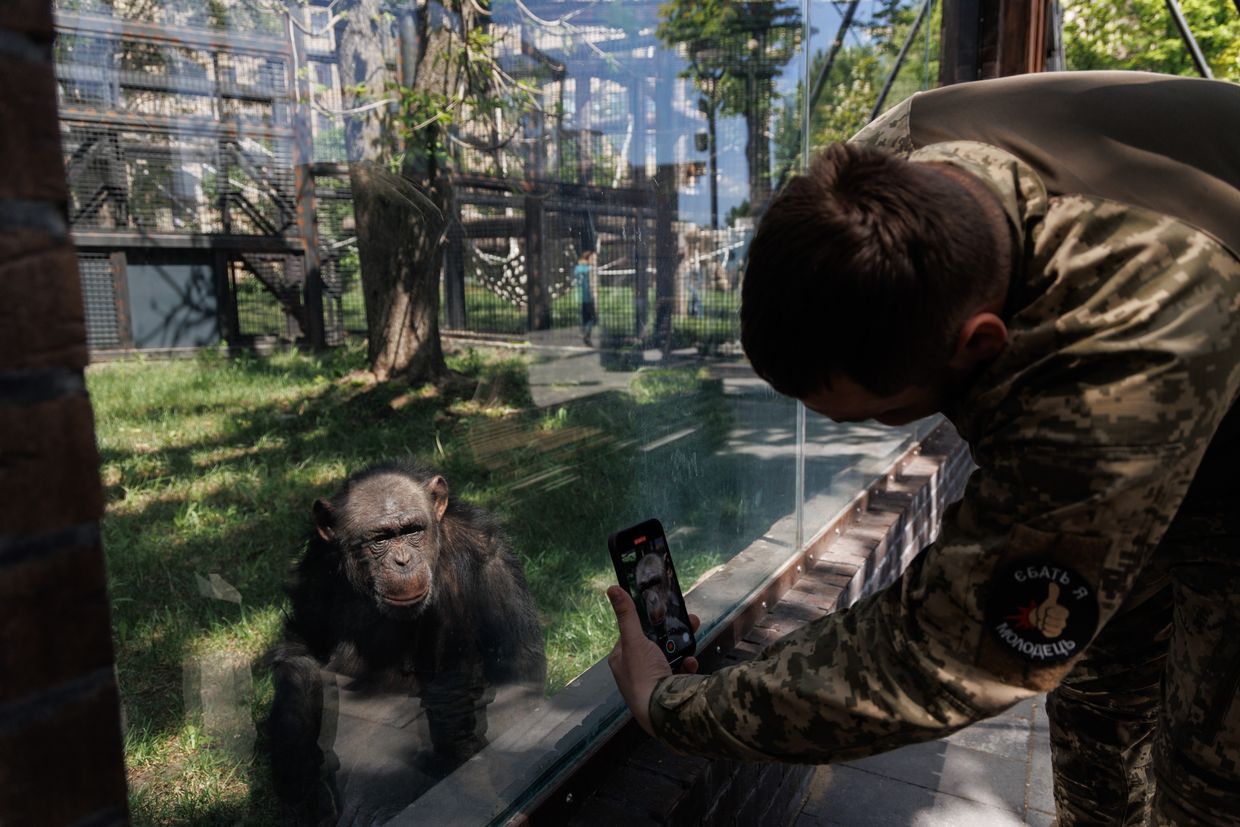
Yevhen Kiosya, a biologist at Kharkiv Zoo has no such qualms as he explains not only the challenges of running a zoo in a war zone, but the necessity of providing the city's residents with a place to escape the stresses of day-to-day life.
"The zoo is an important place to rest because there are not so many options in Kharkiv," he says.
"So during these harsh times, we stay open for free. And that's not just the zoo – public transport in Kharkiv is free as well."
Despite occasionally suffering damage from Russian attacks and housing animals from another zoo in the city that was completely destroyed in the early days of the full-scale invasion, Kharkiv Zoo is home to hundreds of animals that seem perfectly content.
There are some indications that this isn't a totally normal situation however – with other zoos across Europe understandably reluctant to send animals into a warzone, the population is on hold.
Just three penguins have an entire enclosure all to themselves and the zoo's sole elephant looks a bit lonely.
"The wolves in the earlier days used to howl because they thought the sirens were another pack of wolves somewhere else in the city," Kiosya adds.
"[In Kharkiv] there are explosions all the time. And there are people killed almost every day," he says.
Speaking of the calm and serene atmosphere in the zoo, he adds: "It all happens at the same time, that's the weird part."
While discussing the zoo's air raid alert protocol – announce it and let people decide if they want to stay or leave – yet another siren sounds.
Twenty minutes later a sound like a loud tearing can be heard, followed by an explosion from somewhere in the city.
Another Russian guided bomb has destroyed the home of an 82-year-old woman, killing her in her bed.
Her house is now rubble and her neighbor's is still on fire. He went back in to save his TV which now sits on the road in front of the burning building.
Firefighters are still unraveling their hoses when reports of another guided bomb in the air send most of them running back down the road, ever fearful of the Russian "double tap" practice of hitting a target twice, a deliberate ploy to kill rescuers.
As they regroup and before the all clear is given, a senior firefighter asks for volunteers to head back to put out the flames.
"Just volunteers, you don't have to go," he says. Some go, some stay.
Later in the evening, two 16-year-old girls meet on Konstytutsii (Constitution) Square in the center of the city.
Both enjoy school and dancing lessons and say that despite everything "life here is good," though "it would be better if there were no shelling and all sorts of alarms."
They giggle as they talk about aspirations to travel to Europe but darken when asked what they think about Russia and its president, Vladimir Putin.
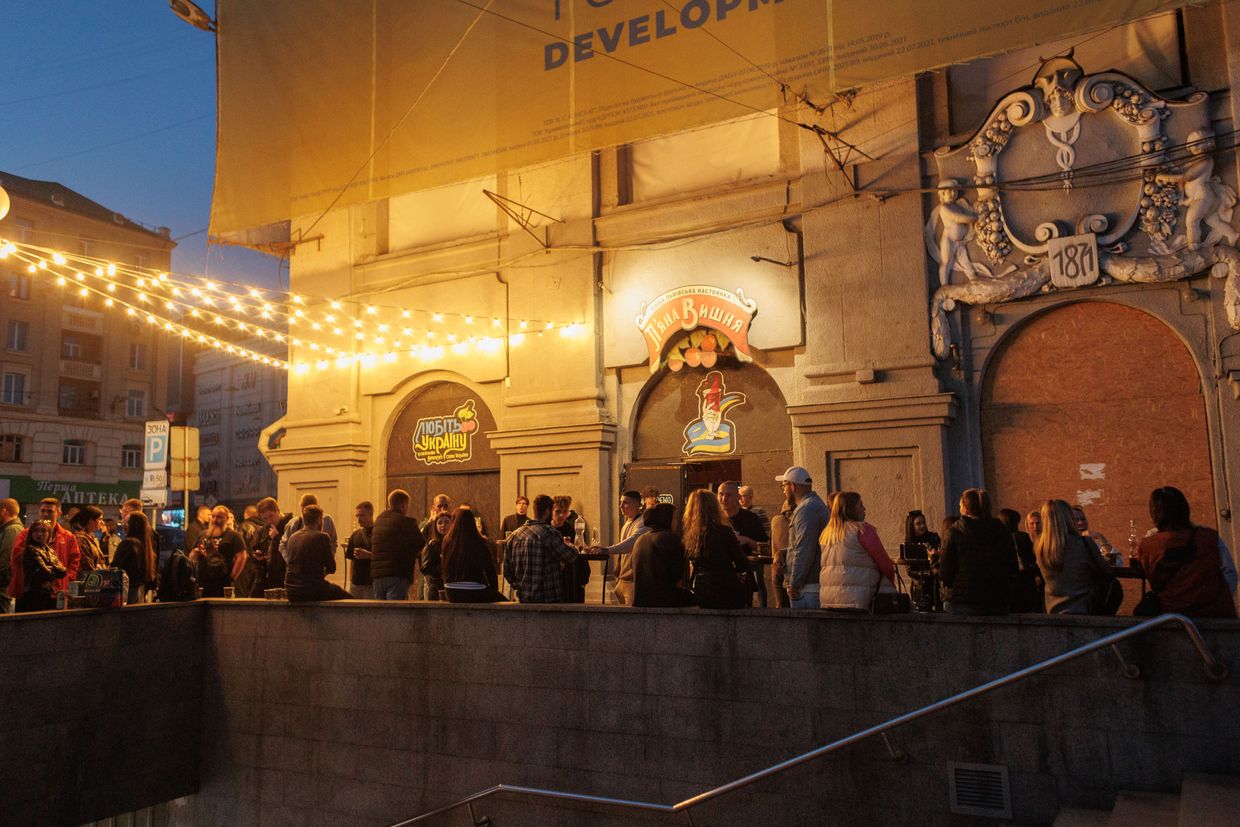
"Can I swear?" one asks. "I can? Well, Putin is huylo (Roughly translates as “Putin is a dickhead”). He's ruined our lives, all Ukrainians. He ruins the lives of little children. Those who are born now will just endure all this difficult stuff.”
"I have a little sister. She gets scared whenever there are explosions and runs straight to the bathroom. He ruined everybody's life."
A few hours later and the city is dark. Russia's long-running attacks on Ukraine's energy infrastructure mean Kharkiv's street lights are kept off, the only illumination coming from car headlights and the glow from inside shops, homes, and bars.
Outside one of those bars, work colleagues Olena, Ira, Iryna, and Alina drink glasses of cherry wine in the dim half-light.
Their emotions swing as they describe how they deal with living under constant bombardment and the thought of another Russian attempt to occupy their home.
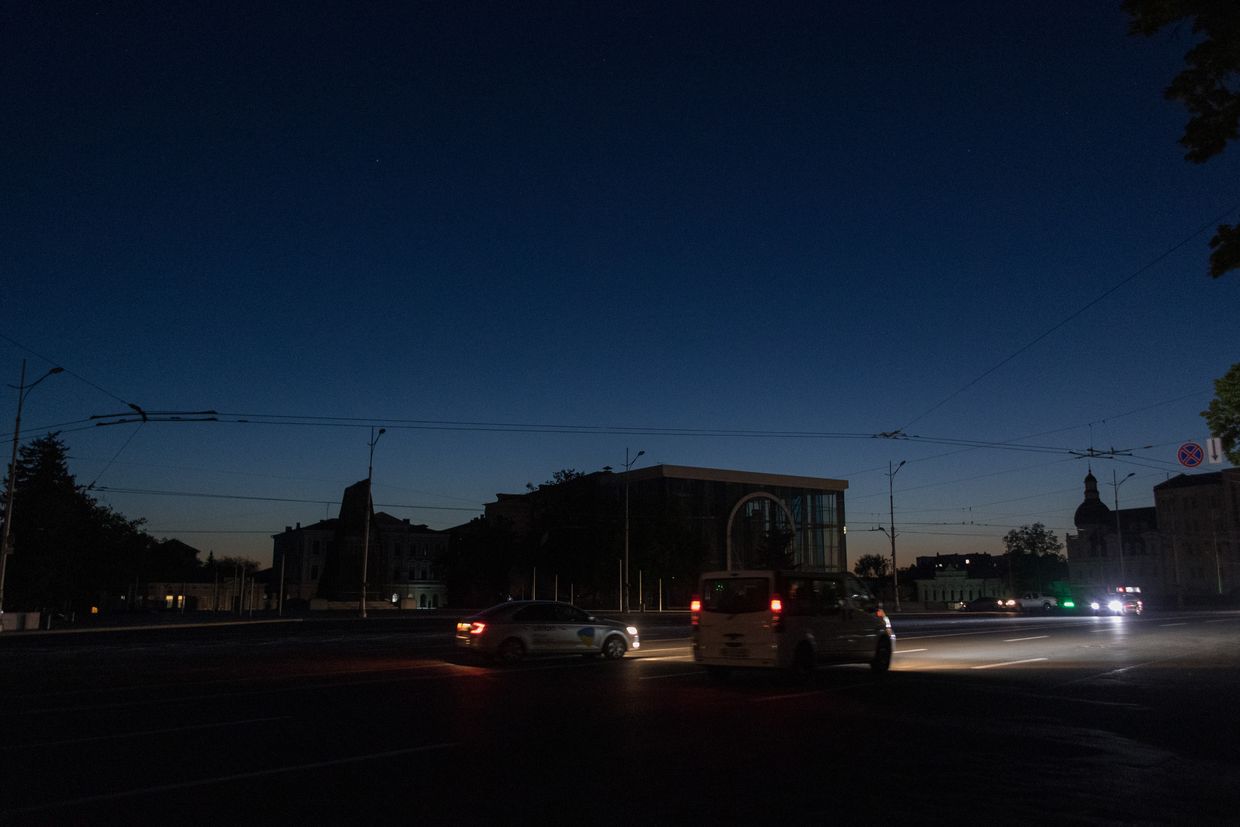
"Everyone’s talking about it," says Iryna. "It is on everyone's lips, everyone is afraid, everyone is worried and planning some way out.
"But I do not want to believe it. Because this is our city, I want to stay here."
The four women laugh as they talk about visiting escape rooms together and finding joy in "simple things" like the city's clean streets and freshly-planted flowers.
"Despite the given situation, it is necessary to rejoice in every little thing in this life," says Alina.
"Because we do not know – today we live, and tomorrow we may not live."
During the 48 hours Kyiv Independent was in Kharkiv, two people were killed and 16 injured in the city by Russian strikes, according to local authorities.
Note from the author:
Hi, this is Chris York, thanks for reading my article. As the Russian offensive continues in Kharkiv Oblast we intend to keep bringing you the stories of people in the region, how they’re coping, and the messages they want the world to hear. Please consider supporting our reporting.
